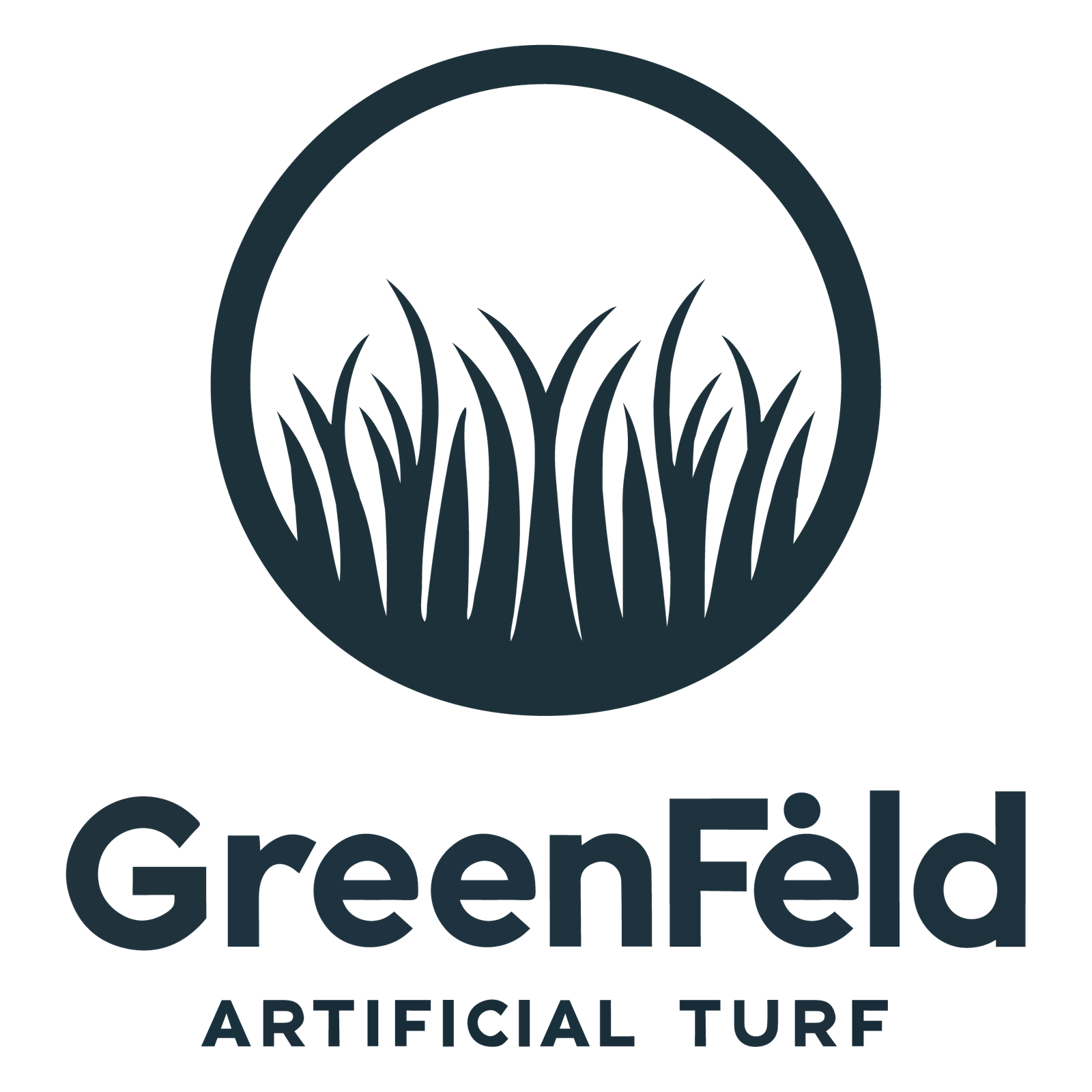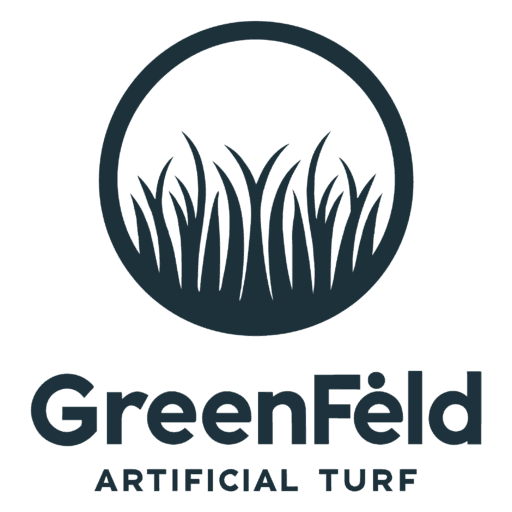Choosing the right artificial grass can feel overwhelming. People worry about quality and durability, yet they need clarity on technical terms.
Artificial grass specifications define how tall fibers stand, how thick they are, how closely they’re stitched, and what backing supports them. These details guide durability, comfort, and cost.

artificial grass specs
I’ve faced these questions many times, trying to balance performance with budget. Let me share my thoughts so you can pick the best turf for your needs.
What Is Pile Height?
Do you wonder why some turf looks lush while others look trimmed? I understand that confusion when first comparing samples.
Pile height is the length of the grass fibers from the backing to the tip. It affects appearance, feel, and usage.
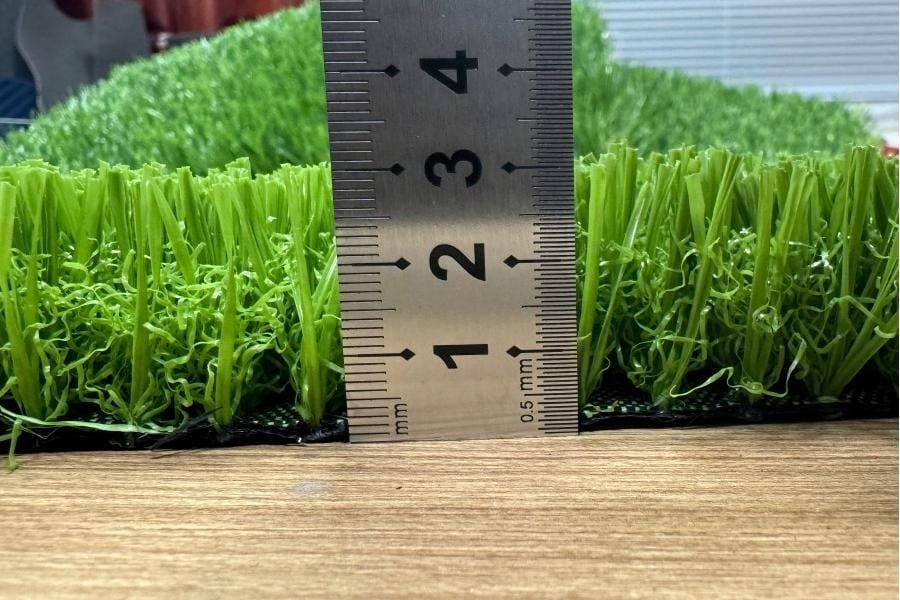
pile height
Understanding Pile Height
What It Means
Pile height tells us how tall the synthetic blades stand. Shorter piles measure around 10-20mm. Longer piles can reach 40mm or more. This is a major factor in the turf’s overall look. A higher pile often appears lush, mimicking real grass. A shorter pile can seem more manicured and sleek.
Why It Matters
Taller fibers can offer a softer feel, which may be ideal for residential lawns or leisure spaces. They also require infill or brushing to keep fibers upright. In high-traffic zones, shorter piles often wear better. They might not flatten as quickly under foot traffic or furniture.
Considerations
Selecting pile height depends on your project’s purpose. For a backyard where kids play, a mid-range pile of around 30mm can deliver comfort and durability. If you want a putting green, you’d opt for a very short pile. Factor in maintenance, too. Taller piles can trap more debris, requiring more brushing.
What Is Dtex?
Some labels list a strange number called Dtex. I recall feeling uncertain about it the first time.
Dtex measures the yarn’s weight in grams per 10,000 meters of length. Higher Dtex often means thicker, stronger yarn.

dtex measure
Decoding Dtex
Basic Definition
Dtex (decitex) is a key measure in textiles. If a turf fiber has 10,000 meters of yarn weighing 8 grams, that’s 8,000 Dtex. Think of it like the thickness of a thread. A higher Dtex number generally indicates a sturdier fiber.
Role in Turf
Sturdier fibers can handle more pressure from foot traffic or sports activities. A high Dtex artificial grass may bounce back faster after heavy use. However, a very high Dtex might feel slightly stiffer, which might not suit all applications.
Practical Tips
If your space sees heavy use, aim for a higher Dtex to reduce flattening. Residential lawns may balance thickness with comfort. Checking the Dtex helps determine resilience. Combine that with pile height and other specs for a full picture. For me, Dtex is a straightforward hint about fiber robustness.
What Is Gauge?
Gauge might look like a confusing term on a turf spec sheet. I once wondered if it related to wiring.
Gauge measures the distance between the rows of stitches across the turf roll. A smaller gauge means rows are closer, leading to denser grass.
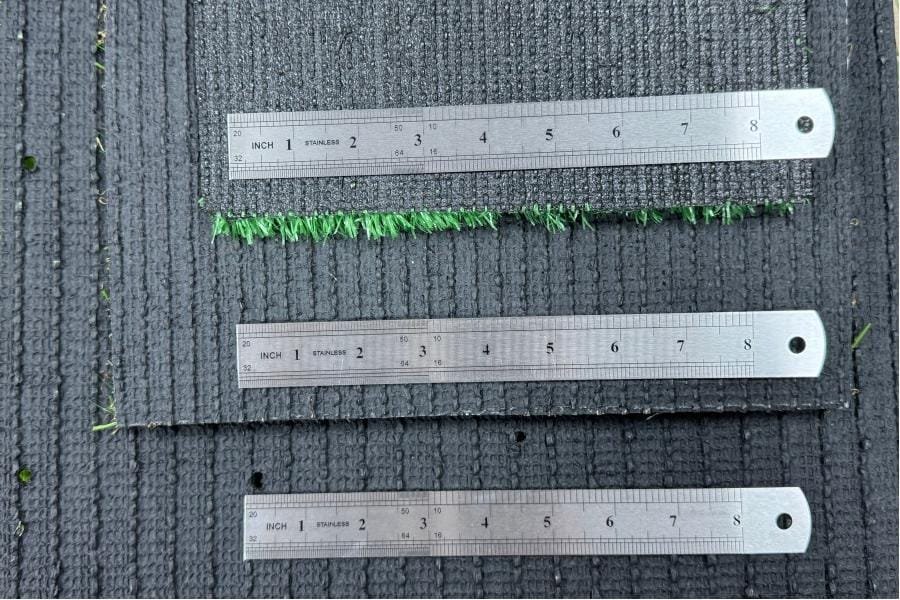
artificial grass gauge
Gauge at a Glance
Measurement Basics
Gauge is often written as fractions of an inch, such as 3/8" or 5/8". If the gauge is 3/8", there is a 3/8-inch gap between each row of fiber stitches. Closer rows mean a tighter distribution of fibers.
Impact on Appearance
A narrower gauge typically results in a fuller look and smoother surface. People who prefer a lush lawn feel often pick a smaller gauge. For high-traffic sports fields, the best gauge balances fiber density with performance. Too tight might trap infill or cause fibers to mat if not maintained.
Making Your Choice
Combine gauge with stitch rate to find overall density. Turf with a narrow gauge but low stitch rate may not seem as dense as you expect. For me, gauge is only one part of the density puzzle, but it’s crucial for the final lawn or field appearance.
What Is Stitch Rate?
People often skip the stitch rate, focusing on pile height or color. I used to do that too, until I saw how it affects quality.
Stitch rate is the number of stitches per 10 centimeters (or per meter) across the length of the turf. A higher stitch rate usually means more fibers.

stitch rate
Stitch Rate Insights
Defining the Rate
Manufacturers typically count how many stitches are present in a set length, commonly 10cm or 1 meter, then note that figure. A higher stitch rate means more yarn rows along the turf’s length, creating a denser product.
Why It Matters
Density enhances the turf’s cushion and overall appearance. A high stitch rate helps the blades stand upright and reduces visible gaps. This feature can affect pricing because more material is used. In sports surfaces, a good stitch rate delivers better ball roll and consistent footing.
Pairing with Gauge
Gauge sets the distance between rows side to side, while stitch rate covers the stitches down the roll. Together, they determine the total fiber density. I suggest checking both numbers to ensure you get the coverage and comfort you want for your installation.
How Do You Calculate Density with Gauge and Stitch Rate?
Do you want a quick formula to compare products? I used to find it puzzling when reading sample labels.
Density can be estimated by multiplying the stitch rate by the width in stitches, then scaling it to a square meter. Gauge indicates the row spacing.

density calculation
The Density Formula
The Basic Calculation
First, convert gauge to the number of rows per meter. For instance, a 3/8" gauge is about 0.9525cm. This means roughly 105 rows per meter (100cm / 0.9525cm). Next, multiply rows per meter by the stitch rate (stitches per meter) to get total stitches. That gives you the tuft count per square meter.
Example
Let’s say your gauge is 3/8" (~105 rows/m) and your stitch rate is 200 stitches per meter. So, 105 × 200 = 21,000 stitches per square meter. This total helps you compare different turfs. Higher numbers hint at denser products.
Consider Other Factors
While density is key, you must also weigh Dtex, pile height, and backing strength. A turf might have a high stitch count but weaker fibers or poor backing. I treat density as one piece of the bigger puzzle.
What Is Backing?
Is there more than one backing? It used to confuse me. Sometimes people use “backing” to mean the secondary layer.
Backing can include multiple layers: the primary layer where yarn is tufted, plus secondary coatings or additional fabrics. This ensures durability and tuft lock.
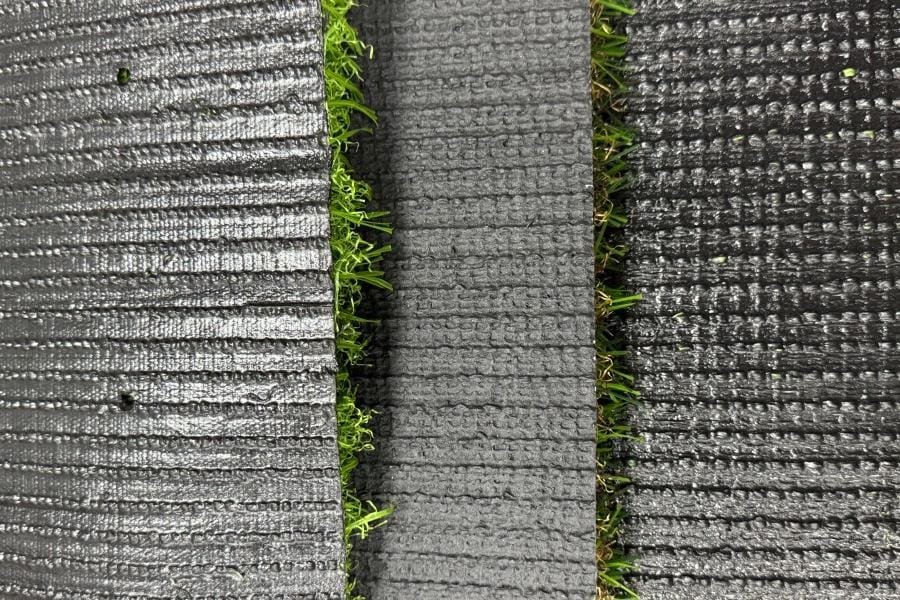
artificial grass backing
Comprehensive Backing Info
Multi-Layer Approach
Modern turf may have a secondary backing layer to secure fibers more firmly. Often, a latex or polyurethane coating is applied on top of the primary fabric to bind the yarn. Some backings include additional reinforcement layers to improve strength and reduce wrinkling.
Functions and Benefits
A high-quality backing resists moisture, helps with drainage, and ensures tuft lock. Better tuft lock means the fibers won’t shed quickly, even in high-traffic fields. Certain backings also add dimensional stability so the turf doesn’t expand or contract excessively with temperature changes.
Selecting the Right Type
Latex backings are common in residential lawns. Polyurethane backings can be pricier, but they offer high performance for sports or commercial use. I always consider local climate, usage patterns, and potential heavy loads. A stable, water-resistant backing can extend the lifespan of any artificial turf installation.
Conclusion
Artificial grass specifications guide everything from looks to longevity. Understanding each detail helps you pick a surface that meets your needs and budget.
